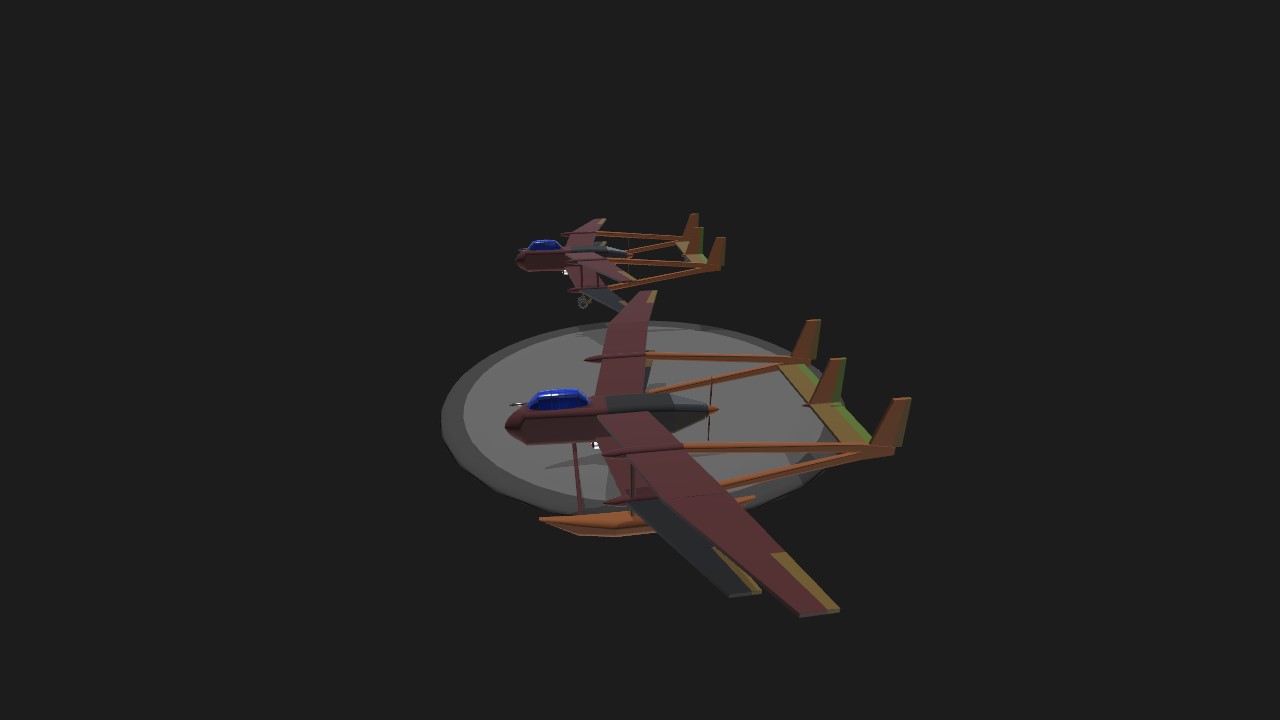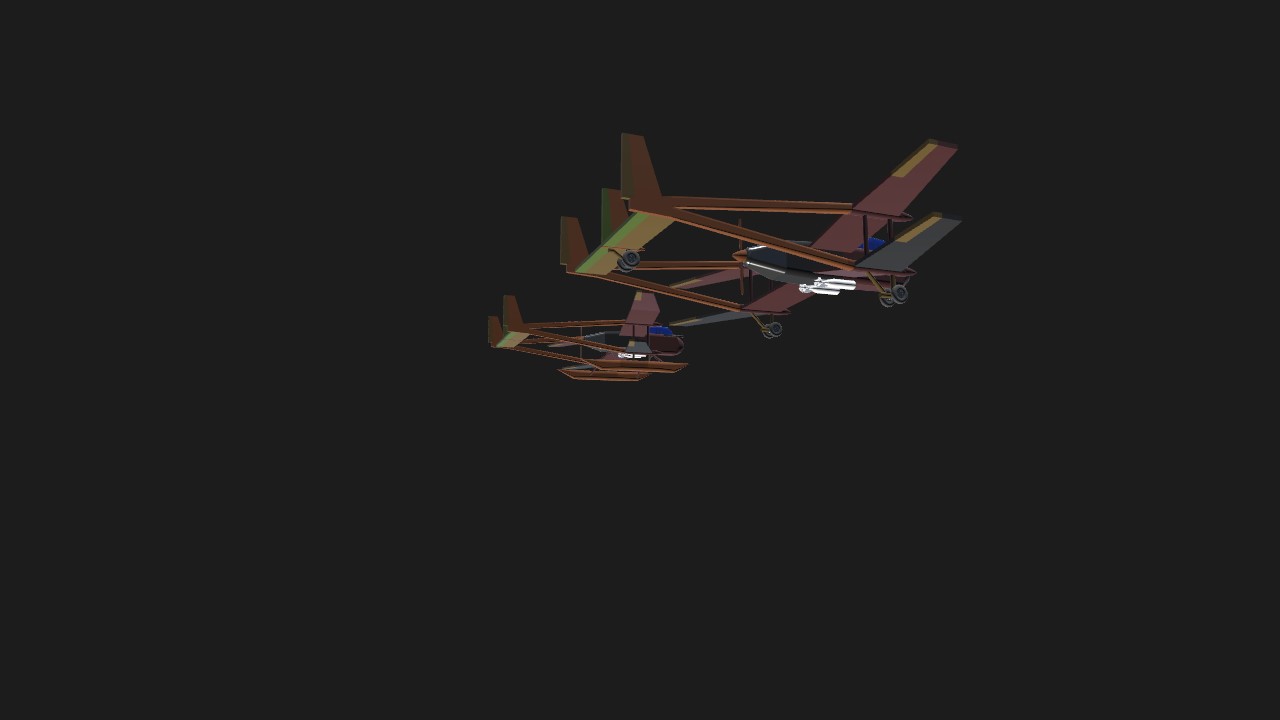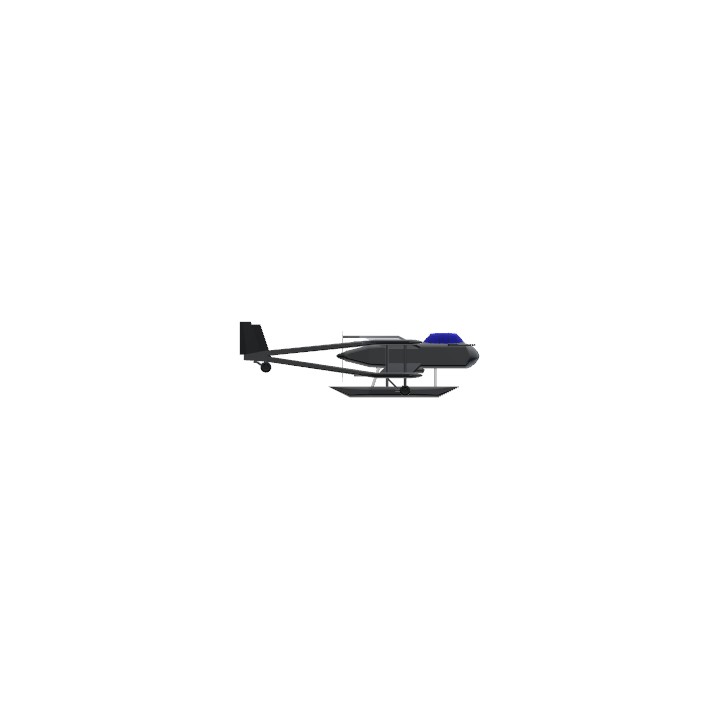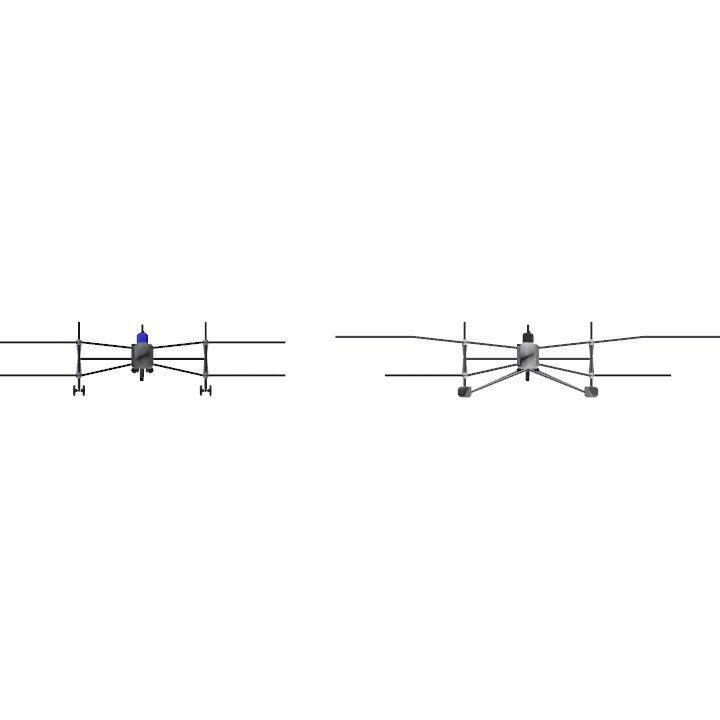The Clothes Horse holds an important spot in CIR aviation history: As one of the first original aircraft to be produced post-Downfall, this machine was originally designed to be easy to produce with common materials by even small workshops. Even the engine was designed to run on all sorts of fuels. This latter trait is actually the main reason this aircraft is a pusher in spite of compromising on it's parameter: this arrangement prevents the pilot from receiving the engine's exhaust fumes and being potentially intoxicated or poisoned.
Originally, the Clothes Horse was made to be an utility aircraft, first being used as a mailplane in civilian capacity. Quickly, it started to be used by regional militias against both pirate raids and petty warlords from the peninsular interior. This quickly led to the development of armed versions of the type as depicted.
These small air corps would later become one of the seeds for the later creation of the Confederal Air Force after the CIR was invaded by a fascist polity from France, which forced the Confederation to create an unified armed force to fend off the attackers and even now is a major source of the many changes the CIR has suffered in both organization and culture since it's inception. This war would see a rapid development of aircraft on the CIR's part, as they suddenly found themselves facing a proper State power with air units of it's own. Most notably, an unarmed Clothes Horse was the first aircraft shot down in the war, with a dead pilot and heavily-wounded co-pilot.
The aircraft is shown here as both a landplane and a floatplane.
Specifications
General Characteristics
- Created On Windows
- Wingspan 107.2ft (32.7m)
- Length 35.5ft (10.8m)
- Height 11.1ft (3.4m)
- Empty Weight 1,070lbs (485kg)
- Loaded Weight 2,572lbs (1,166kg)
Performance
- Horse Power/Weight Ratio 0.097
- Wing Loading 6.2lbs/ft2 (30.4kg/m2)
- Wing Area 412.9ft2 (38.4m2)
- Drag Points 4445
Parts
- Number of Parts 74
- Control Surfaces 9
- Performance Cost 706






